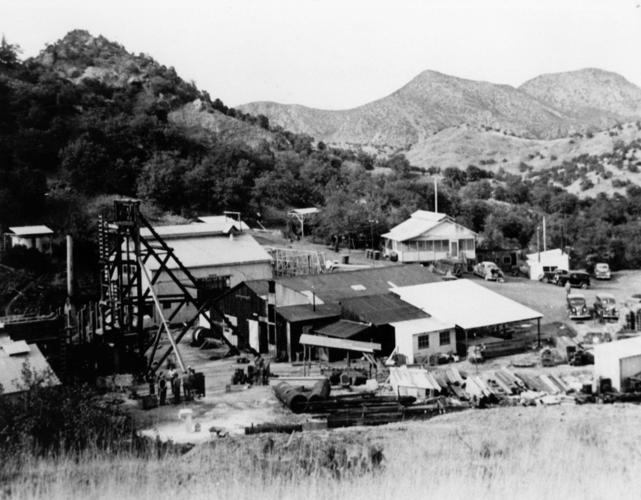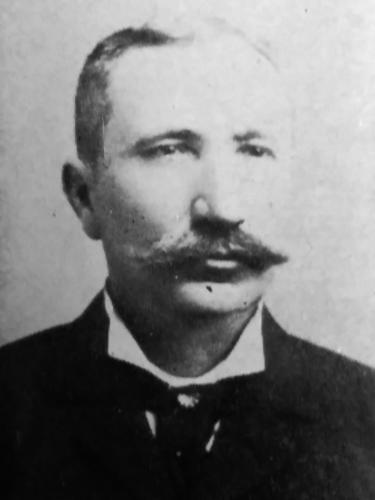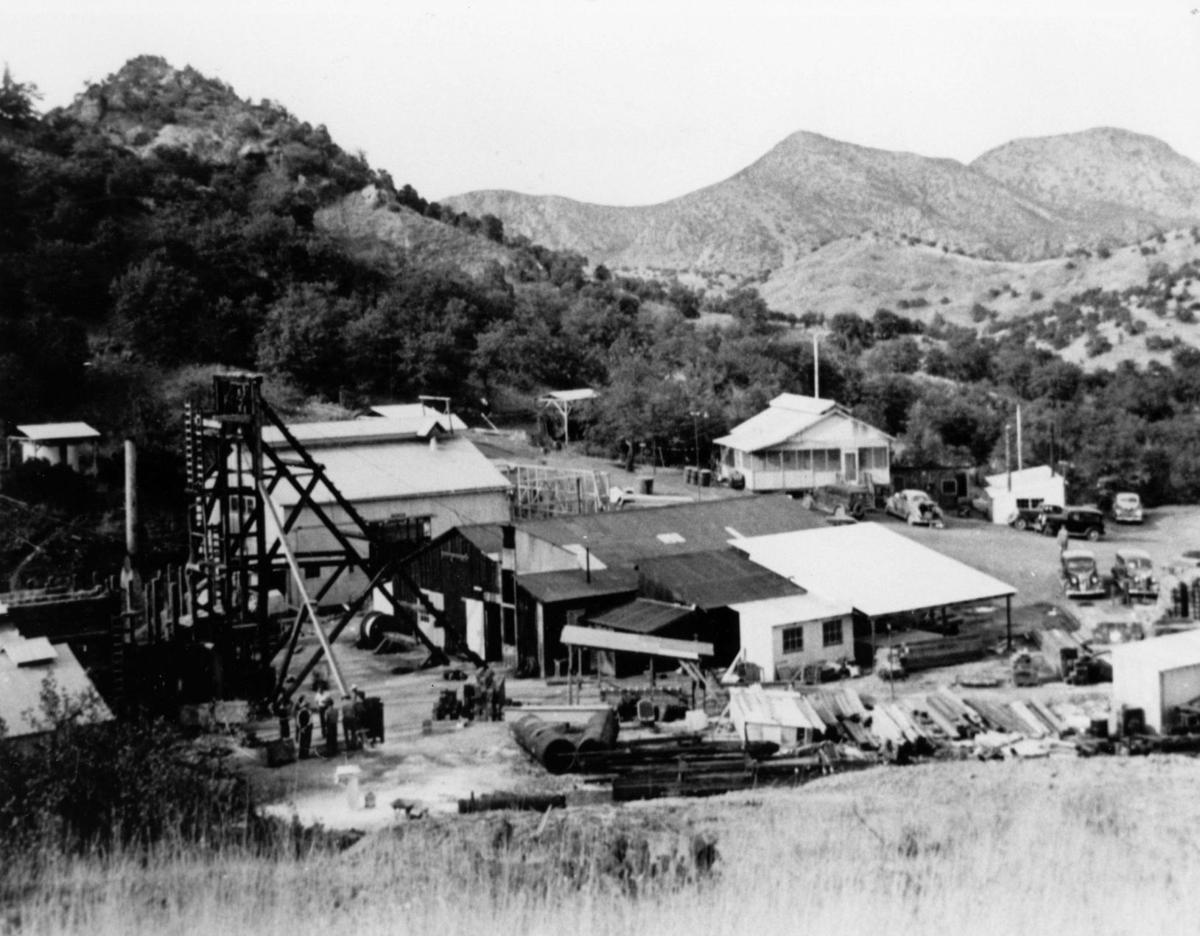One of the prominent mines in the Harshaw district is the Trench Mine located 12 miles south of Patagonia in Santa Cruz County. It is credited with having produced high-grade lead-silver ore with its earliest workings dating back perhaps to Indian and Jesuit miners. The discovery of stone axes and hammers at the site in the 1870s attests to this possibility that they originally were used to mine clay and iron pigments.
Early descriptions of the mine discuss its iron-red outcroppings and profitable banded, porous and drusy ore fissure vein averaging 1 to 5 feet in width covering more than 20,000 feet on the surface. Its minerals include cerussite, pyromorphite and silver-bearing galena mixed with gangue rock including quartz, specular iridescent hematite, and rhodochrosite.
As early as 1858, the Trench vein in the Patagonia Mountains was worked using nearby smelters for ore reduction. The lead acquired was used in the manufacture of bullets. It was worked by Col. Harry Titus the following year and patented by James Ben Ali Haggin prior to 1872 and leased to a Mexican, Senõr Pádez (whose first name doesn’t appear in the records), later that decade. In 1875, the Trench Mine was credited with having produced 100 tons of argentiferous galena subsequently smelted at nearby adobe furnaces, providing a profit of $8,700 in silver.
Acquiring the mine in 1880, the George Hearst estate extensively developed the workings, sinking a 400-foot shaft and steam hoisting works enabling mine owners Haggin and Lloyd Tevis to mine rich ore. William Powers, another owner of the mine and a pioneer of the Patagonia Mining district, also worked the property, which consisted of two several-hundred-feet-long tunnels, at a profit of $4,400. A native of Ireland, Powers was known by citizens of Patagonia as “Mayor”. He was credited with having shipped several carloads of silver ore to the Crittenden smelter built by the Marder Luse & Co. near old Camp Crittenden. The ore was said to average 40 percent lead and 60 ounces to the ton in silver.
The mine was later optioned to Sen. W.A. Clark, owner of the United Verde Mine in Jerome. His operation included 20 miners in 1915. Between 1905 and 1920, the mine produced 1.5 million pounds of lead and $80,000 worth of silver.
Beginning in 1939, the Trench Mine and neighboring Flux Mine were operated by Asarco, producing 950,000 tons of sulfide ore treated at a 200-ton/per day flotation mill located at Trench Camp, one mile west of the town of Harshaw. The mines were described by miners as having poor ventilation causing sickness relating to the off gassing of rotten timbers found below.
Several onsite buildings at the property included a 35-by-50-foot boarding house, an assay office, a power house consisting of four big diesel engines, and a cantina. A tent city near the mine provided the miners with cheap housing.
Mining activity continued into the 1960s with both the mining and milling of lead-zinc ores onsite. Electric power for milling operations was supplied by the Citizens Utility Co. The crushing plant and floatation concentrator were operated by James P. Nash and E.W. McFarland. The operation consisted of 40 miners working six days per week with an average production of 1,000 tons of lead-zinc ore per month. The mill also handled custom ores including the lead zinc-copper ores from the nearby Flux Mine. Concentrates were shipped by rail to the Asarco El Paso smelter. Low-grade ore past the 670 foot level forced mining operations to cease by 1965. By 1968, the mill was removed from the property.
Asarco conducted an extensive drilling operation around the Trench Mine during the 1970s in search of porphyry copper. Since the 1980s, Asarco had been involved on and off in remediation of the land surrounding the mine site, some of which involved the use of artificial wetlands as a means to treat acidic mine drainage.
Today the 250-acre Trench Mine site owned by AZ Mining Inc. (formerly Wildcat Silver Corp.), a Canadian mineral exploration company, is conducting exploratory drills to determine the size and richness of the ore body. Current estimates include the potential of mining $13 billion worth of metals from its mining properties, including the Hermosa deposit in the Patagonia Mountains.







